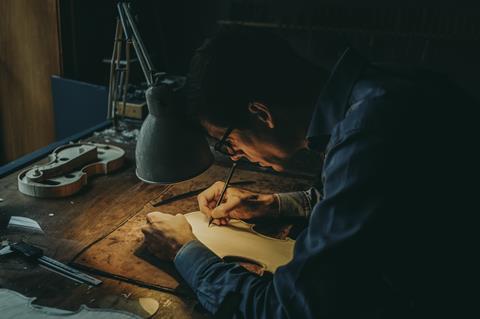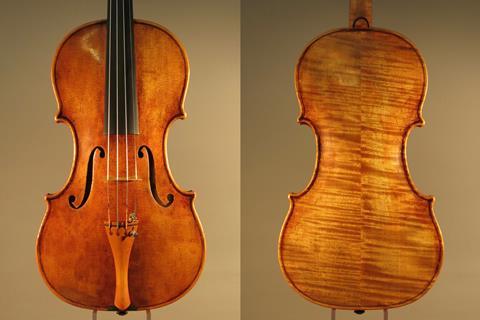Violin maker Jacob von der Lippe explores this question, via a recording of works performed by various musicians on his instruments

Discover more lutherie articles here
Violin making today is a craft closely related to the period spanning from 1550 to 1750. Often, when looking at violins made in our time; whether at violin making competitions, international workshops or friendly encounters between colleagues, it is striking how many violins today look much like one another.
Compare that to what our Italian predecessors did 300 years ago. Back then, there was a tremendous amount of diversity. You could find different styles and artistic outputs from one Italian city to the next. Many of these makers were trained with the same starting point from a certain school or maker, but often went on to create something personal and easily recognisable during their professional careers. In the same way as the old Italian makers, we should search for our own unique style. How are our violins perceived today? Well, by our colleagues, mostly by eye. And our clients? Mostly by what they hear. Making a personal model demands courage.
Having worked with classical patterns like Stradivari and Guarneri for more than ten years, I felt eager to try something new. I had met François Denis, a French violin maker and author of the book Traité de Lutherie. His book inspired me to start drawing my own personal model. I tried to figure out a model that gave a balanced, full bodied and projecting sound. For me, this is a work of intuition. After having made a certain number of instruments, you develop a gut feeling for what works. This is, of course, also based on the feedback from many musicians along the way. I am privileged to see nearly all my instruments on a regular basis, and this gives me valuable information on how they evolve. This is a crucial point for all violin makers. I always ask the musicians for their positive and negative feedback. The constructive input on what to improve, is my guiding light.
Read: ‘Openness, clarity and nasality’: why Stradivari violins provide a preferred sound

Sound is the true reason for making instruments. In this recording, Sculpted Sound, the focus is on sound itself. Can a characteristic of sound be heard among instruments created by the same log of spruce and the hands of one specific violin maker, even if played by different instrumentalists? How do vastly different venues highlight various aspects of the same instruments? And how about the development of one violin maker through a span of twenty years?
These questions were explored through a series of concerts in spectacular venues around Oslo. The audience was invited for a truly special experience with musicians playing their own instruments made by myself, and we have attempted to capture that atmosphere here on this live recording Sculpted Sound.
On the axis between art and handcraft is where you will find violin making, one of the oldest instrument making skills still alive. The world premiere recording Sculpted Sound is the fruit of this unique relationship between violin maker and devoted musicians. With this release, I am celebrating twenty years of activity and more than sixty instruments.
Watch the trailer for Sculpted Sound here:
Sculpted Sound will be released on LP vinyl and CD on 23 November 23rd 7pm with a release party and panel discussion about sound led by Norwegian music journalist Guttorm Andreasen at Kunstnernes Hus, Oslo - Norway. The digital release will be split into three EPs and will be published 25 November, 9 December and 13 January 2023 on all digital platforms. Listen to the first EP here: https://bit.ly/jacobvdlippe-spotify (link live from 25 November)











































No comments yet